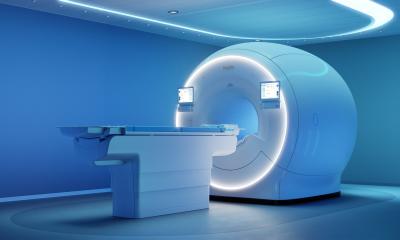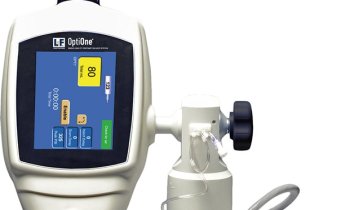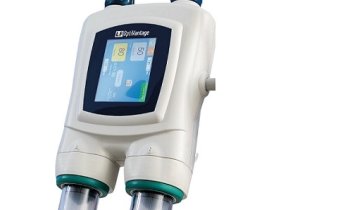
Image source: Adobe Stock/pangoasis
Article • Sustainability in medical imaging
Reducing environmental pollution after contrast-enhanced scans
Radiologists called for action to reduce the release of contrast media in the hospital’s wastewater after contrast-enhanced examinations in a dedicated session at ECR 2023.
Report: Mélisande Rouger
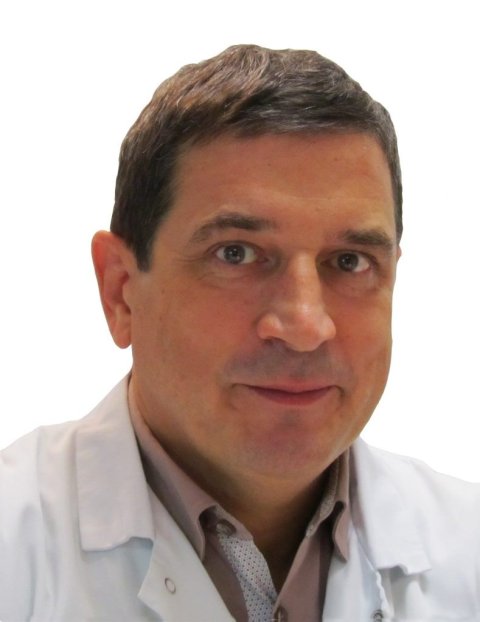
An estimated 300 million CT examinations are being performed each year in the world.1 This number is expected to grow, and with it, the amount of iodinated contrast media (ICM) used in radiology, according to Professor Olivier Clément, Head of Imaging at Georges Pompidou European Hospital in Paris, France, and Chair of the contrast media committee of the European Society of Urogenital Radiology (ESUR). ‘If you assume that 40% of CT scans are being carried out with an average of 100ml of contrast media, you end up with 12 million litres of ICM that are being injected in patients and then evacuated in the sewage,’ he told the audience in Vienna. This contamination of the aquatic environment is being increasingly studied. In Germany, for example, about 200 kg of contrast media are released in the Rhine river every day. ‘That means 70.9 tonnes per year. It’s a lot and it means that we can really recover ICM from the aquatic environment,’ he said.
Appeal for a more patient-tailored approach
There are also review studies about contrast media’s effects on the environment. In a paper published in the Science of the Total Environment in 2021, a team of Indian researchers found that, whatever the contrast media used, a large amount was found not just in hospitals’ sewage waste water but also in surface, ground and drinking water in North America, Asia and Europe.2 ‘It’s a global problem, a world issue of contamination of surface and drinking water due to contrast media release,’ he said. The contribution of ICM to water pollution can be as high as 80% in the mass loading of pharmaceuticals in a hospital’s effluent, because of the amount of ICM that is being injected, he went on. ‘When we inject antibiotics, we inject up to 3 g per patient. But when we inject ICM, we inject up to 45 g per patient so the mass of CM is much higher.’ The expert stressed that in themselves, ICMs are not dangerous – the danger comes from the disinfection process in the treatment plants, which use chemicals such as chlorine and chloramine. These products create toxic iodinated disinfection by-products (IDBPs) that can be found in the aquatic environment and drinking water. ‘This is really the environmental problem of using contrast media,’ he said.
The radiology community should be aware of the huge amount of iodine contrast media released in the environment. We should inject wisely, know about toxic IDBPs in plants and take specific measures to decrease the effluence
Olivier Clément
Radiologists should be aware of the issue and work to decrease pollution linked with ICM use. ‘First we should inject less contrast media and respect the indication, i.e., always inject dose which is related to weight, especially for oncologic imaging,’ he suggested. ‘We should reduce waste and use the adequate vial for the patient, i.e., open a vial of 100 ml when we use 90 and not a vial of 150. We should also recycle the residue in the vial.’
Taking steps is also important because of the high demand for ICM all over the world. ‘Vendors can produce a certain amount of ICM per year that isn’t even sufficient for all the examinations,’ Clément said. ‘So, we must think of how we use these products and find new ways to inject less contrast, with low kV and AI for example.’ Although software solutions are being trained to reduce ICM dose, a small amount of contrast media remains necessary to actually create contrast in the image, he believes. ‘We will still need contrast media in radiology for a long time.’
Strategies to reduce pollution include releasing ICM in hospital circuits linked with specific plants, installing dry toilets for patients who have undergone a contrast-enhanced examination, and collecting urine in bags to be incinerated, since incineration is less polluting than using ICBPs to purify the water. ‘The radiology community should be aware of the huge amount of iodine contrast media released in the environment,’ he concluded. ‘We should inject wisely, know about toxic IDBPs in plants and take specific measures to decrease the effluence.’
Surprisingly high ‘green sensitivity’ in patients
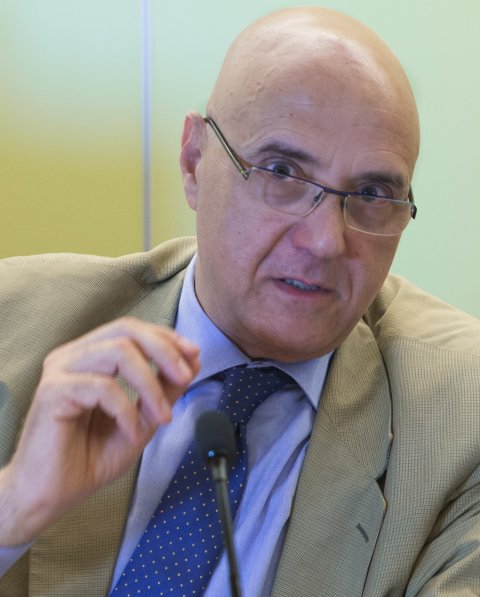
Iodine contrast media are not the only source of concern when it comes to residuals in hospitals’ wastewater. About 50 million of gadolinium-based contrast agents (GBCA) doses are being injected per year and then evacuated in the sewage, according to Professor Francesco Sardanelli, Director of the Department of Radiology at the Research Hospital (IRCCS) Policlinico San Donato in Milan, Italy, where the GREENWATER study was recently launched. As previously reported, the project aims to evaluate the extent of retrievable ICM and GBCA from the urine collected after CT and MRI scans, and to assess patient acceptance to participate in the study - the ‘green sensitivity’. The study was carried out with urine collection within 60 minutes of administering the contrast agent, so about 30 minutes after the examination. Results have been both surprising and encouraging, Sardanelli explained. ‘The first unexpected finding to me was the high acceptance from patients,’ he said. ’94% of them agreed to take part in the study and stay half an hour more in the department. That means that we can go in this direction quite effortlessly.’ The fact that patients wanted to cooperate in the project is very good news for manufacturers and hospitals, he added. ‘It shows patients are highly sensitive to sustainability. Even in a hectic city like Milan, people took the time. We have to use this availability.’
Recommended article
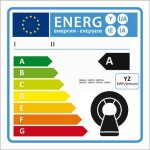
Article • Energy conservation & waste reduction
Reducing the eco-footprint of radiology
Contrast agents in the wastewater and power-hungry imaging systems: The eco-footprint of healthcare is huge, and radiology departments are among the main culprits. An expert panel at the ECR Overture explored ways to make the field “greener”.
The future is to recycle both iodine and gadolinium agents, by creating virtuous cycles in which the product comes back to the producer after it has been injected in the patient. ‘That would make sense,’ he concluded. ‘Recycling is the solution.’
Profiles:
Olivier Clément is Professor of Radiology at Descartes Paris University and Head of Imaging at Georges Pompidou European Hospital in Paris, France. He is also Chair of the contrast media safety committee of the European Society of Urogenital Radiology (ESUR).
Francesco Sardanelli is Professor of Radiology at Milan University and Director of the Department of Radiology at the Research Hospital (IRCCS) Policlinico San Donato in Milan, Italy.
References:
- Dekker et al.: Tackling the increasing contamination of the water supply by iodinated contrast media; Insights into Imaging 2022
- Sengar et al.: Comprehensive review on iodinated X-ray contrast media: Complete fate, occurrence, and formation of disinfection byproducts; Science of the Total Environment 2021
07.09.2023





